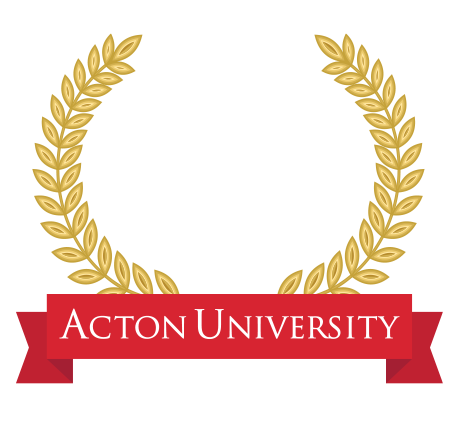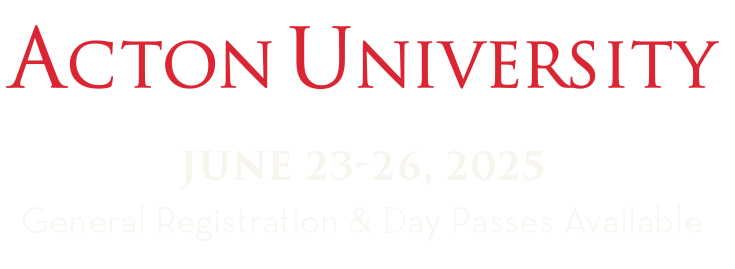Eighty years ago, Woodrow Wilson took America into the twentieth century with a challenge to make the world safe for democracy. As we enter the twenty-first century, our task is to make democracy safe for the world”: the very significance of Fareed Zakaria’s The Future of Freedom: Illiberal Democracy at Home and Abroad is condensed in its brilliant last paragraph. Dr. Zakaria, who is the editor of Newsweek International and a celebrated commentator, is not the first who tries to complete the geography of the limits and restrains to be imposed on this peculiar form of government.
This effort has been one of the topoi of classical liberalism in the last two centuries: classical liberals were not that much concerned with the question “how many people are choosing the rulers?” (democracy), but rather with the question “how should political power be restrained in order to be compatible with individual freedom?” (liberty). Zakaria goes back to the underpinning of this complex tradition of thought to demonstrate that freedom comes not from politicians’ slavish obeisance to the whims of the people. Freedom comes only thanks to an intricate architecture of liberty, which basically consists of a whole set of institutions that counterbalance central power.
The Future of Freedom is an eloquent defense of constitutional liberalism over mere majority rule, and it could not have come on the scene at a more appropriate time. Democracy—a procedural rule based upon frequent elections in a regime of universal franchise—is not per se the habitat of freedom. “For people in the West,” Zakaria writes, “democracy means ‘liberal democracy’: a political system marked not only by free and fair elections but also by the rule of law, a separation of powers, and the protection of basic liberties of speech, assembly, religion, and property. But this bundle of freedoms—what might be termed ‘constitutional liberal’—has nothing intrinsically to do with democracy and the two have not always gone together, even in the West.” The fact that some modern dictatorships sprang from the “will of the people” is well known and acknowledged by Zakaria. But, in a sense, that does not surprise him: “constitutional liberalism,” he writes, “is not about the procedures for selecting government but, rather, government’s goals.”
Political institutions should be evaluated not just for the goals they are pursuing—but for their efficiency in pursuing those very goals. That liberal constitutionalism has been enough for preserving individual freedom is a questionable proposition, and indeed that has been questioned by a relevant number of scholars. The renowned scholar Anthony de Jasay compared constitutions with a chastity belt intended to restrain political libido. But, he famously pointed out, “With its key always within reach, a chastity belt will at best delay before nature takes its course.”
This metaphor reminds us that political constitutions are nevertheless written by human hands. Legislators have the power of writing and possibly re-writing and changing them. In an enlightening page of his On Power, Bertrand de Jouvenel quotes John of Salisbury’s venerable distinction between tyranny and kingship. “Between a tyrant and a prince,” he wrote in the Policraticus, “there is this single or chief difference, that the latter obeys the law and rules the people by its dictates, accounting himself as but their servant.” This dichotomy was truly intelligible to the medieval man, who firmly believed that a law that was independent of political power, written in the sky and engraved in human hearts, truly existed. But modernity is fuelled by secularization: in our times, political authority must be not merely the enforcer of natural or consuetudinary law, but rather the producer of law.
Zakaria is right when he writes: “legitimacy is the elixir of political power .… Only democracy has that authority in the world today.” But although democracy is perceived by most as a sufficient guarantee for individual liberty, that does not prove it really is. In a sense, The Future of Freedom is all about this point. Nevertheless, Zakaria merely substitutes constitutionalism for democracy and maintains that it is necessary to preserve liberty without questioning constitutionalism’s own doctrinaire legitimization. Constitutionalism raises questions that deserve to be answered in detail.
Zakaria simply does not ask himself if constitutionalism is either theoretically consistent or historically efficient in preserving freedom. This fact, although being somewhat excusable in a book written for laypeople, constitutes a serious problem in the logical structure of the The Future of Freedom.
Zakaria understands perfectly what the spirit of a liberal constitution is: “Constitutions,” he writes, “were also meant to tame the passions of the public, creating not simply democratic but deliberative governments.” Fair enough, but did they succeed?
Zakaria provides a negative answer indirectly when examining the growth of government in recent years. “Since the early 1980s, three Republican presidents … one Republican speaker, and one Democrat president have tried to pare down government spending. But they bumped up against the reality of interest-group power. As a result, in eight years Reagan was able to close exactly four government programs of any note.”
Zakaria’s account of the “tyranny of the status quo” focuses more on the power of vested interest than it does on institutional reasons. That is an unfortunate deficiency, because the book itself deals greatly with the different performances of several institutional frameworks. What is truly valuable, in this analysis, is the role that Zakaria acknowledges for decentralization per se(and, so, its instrumentality in making democracy safer for the world).
For example, he recounts an interesting episode, well known to the scholars of the Austrian Empire. “That March [1895] Vienna had elected an ultranationalist, Karl Lueger, as mayor. Lueger’s politics were ugly. He regularly likened Jews to locusts, demanding that they be crushed into the ground like fertilizer or packed onto ships and drowned at sea. The Habsburg emperor, Franz Joseph I, decided that Lueger’s election was a threat to the city’s civic liberty and, in an unprecedented move, refused to honor it.” This was indeed, as Zakaria sharply notes, a celebration of “liberty against democracy” (emphasis added).
The late Erik von Kuehnelt-Leddihn told the story of Theodore Roosevelt calling on Emperor Franz Joseph and asking what possible point there could be to an emperor in the modern 20th century. Franz Joseph replied: “To protect my peoples from their governments.” We could not possibly know if the great Emperor implied that, vice versa, a democracy did not know of such a protection.
It could be. But what made the Habsburgs’ empire a still peerless institution, which had the great merit of preserving freedom for its citizen vis-à-vis the incoming menace of nationalism (and, indeed, vis-à-vis the liberals who preached nationalism at those times), is not monarchy per se. Rather, it is the fact that the Habsburg monarchy fit into a scheme of mutually limiting powers that made it impossible for a homogeneous central authority to take over.
Zakaria acknowledges this fact, and actually his account of the birth of freedom in the West is mostly Actonian. He follows Benjamin Constant’s footsteps in distinguishing between the freedom perceived by the ancients and by the moderns: the latter being basically a negative freedom, not just the liberty to take a part in the government of the polis (as Ancient, Greek-democratic eleutheria was). Then, he reflects on what he calls “the paradox of Catholicism”: “The church never saw itself as furthering individual liberty, but from the start it tenaciously opposed the power of the state and thus placed limits on monarchs’ rule …. The Catholic Church was the first major institution in history that was independent of temporal authority and willing to challenge it. By doing this it cracked the edifice of state power, and in nooks and crannies individual liberty began to grow.”
That is neither new nor is it original, but it is indeed interesting how Zakaria seeks to popularize certain findings and studies still both unknown to a larger audience and opposed by the Straussian neo-conservatives.
Nevertheless, Zakaria seems to believe that, although the Popes’ actions unintentionally produced a higher degree of freedom, the Catholic Church is inherently an institution with little concern for individual liberty. There is really no fitting comparison between the church and political power. The Church is a voluntary organization: people who belong to it can freely exercise their right to exit. The Church’s authority is moral, not political, and people subscribe to it without being coerced by anyone. We do not have to tithe to our bishops, but we must pay taxes to our politicians: this key fact is missed in Zakaria’s analysis. Similarly, some may have doubts about his understanding of the market economy. He often pays lip service to private property and the market, but he does not seem to fully grasp their significance for personal freedom.
Even so, now that democracy has become a sacred cow, The Future of Freedom offers a welcome challenge to mainstream, established opinions. Zakaria’s brave effort to distinguish between majority rule and individual freedom deserves to be carefully pondered.






